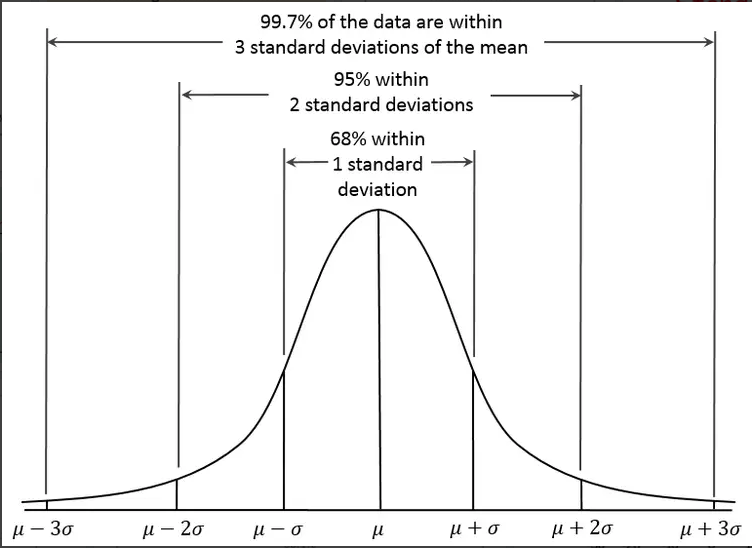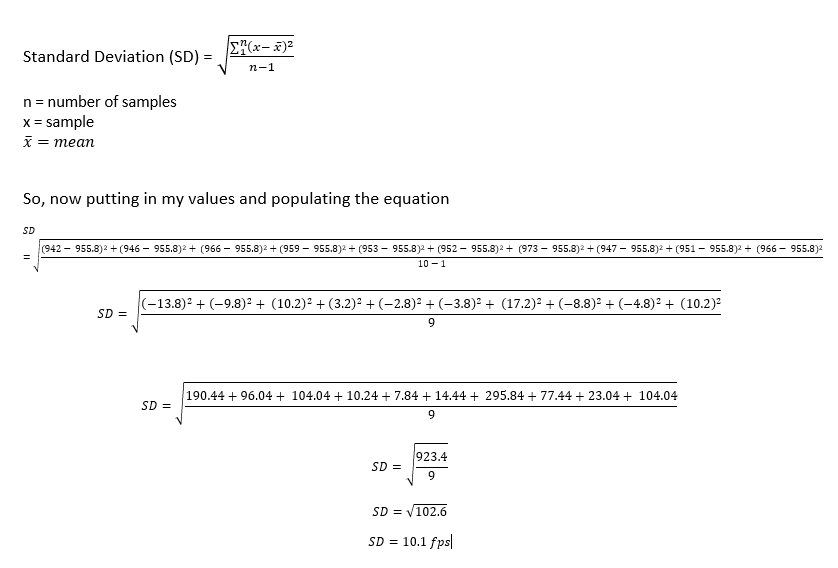More math today, hurray! I hope that I am bringing this in an approachable fashion because I find it interesting. It’s one of the ways to sort of geek out in the area without spending a whole bunch of money. Math is essentially free after the experiment is done.
Today I want to talk about Standard Deviation (often represented by SD). You can get super in the weeds with the extra places you can take the math, but that we will not do. So what is it? Standard deviation is statistical modelling to predict the probability of values following within a calculated range. Or said another way, what can I expect my velocities to be based on the measurements that I have taken.

Let’s not get scared but there are a couple mathematical terms to discuss. The first is that this simple calculation is going to only look between the the first two divisions (called the Greek letter sigma). One sigma (or deviation) are values representing 68% of all the measurements (or the majority).
We will assume that the data is normal and distributed like the graph. In that case, we can just multiply the standard deviation we calculate by 2 to get 95%. Same with getting 3 sigma. The mathematical description of sigma is variance. The variance is the average distance between the calculated mean value. This is why we can simply multiply the variance by a factor.
One reason to do this is that you can create expected behavior. Another one is that you can validate that your equipment is working properly (using the higher level math). I will leave it at that since I feel like if you are not convinced already, me keeping on probably won’t help. Using my data from last Thursday, let’s get into the calculation.

To really get to what I am saying here is that 68% of the time, the velocity is going to fall between 945.7 and 965.9 feet per second. That translates to the mean minus the standard deviation (955.8 – 10.1 = 945.7) and the mean plus the standard deviation (955.8 + 10.1 = 965.9). And finally, 99.7% of the pellets will be 925.5 – 986.1 fps.
Of course, like the supreme court this is a very myopic look at things. This is a 7.56 grain pellet, velocity measured at the muzzle with no wind, 65 degree ambient temperature and 50% relative humidity. I am going to look at some of the other variables as time moves on.
End Your Programming Routine: Hopefully, that made some sense. You can also use excel to do this without understanding the formula if you can figure out how to make formulas work. My points today are 1) this is possible to do relatively simply 2) my rifle is pretty consistent 3) and now I have some data to compare other experiments against. Next week, I am going to look at velocity at the target.
Recent Comments